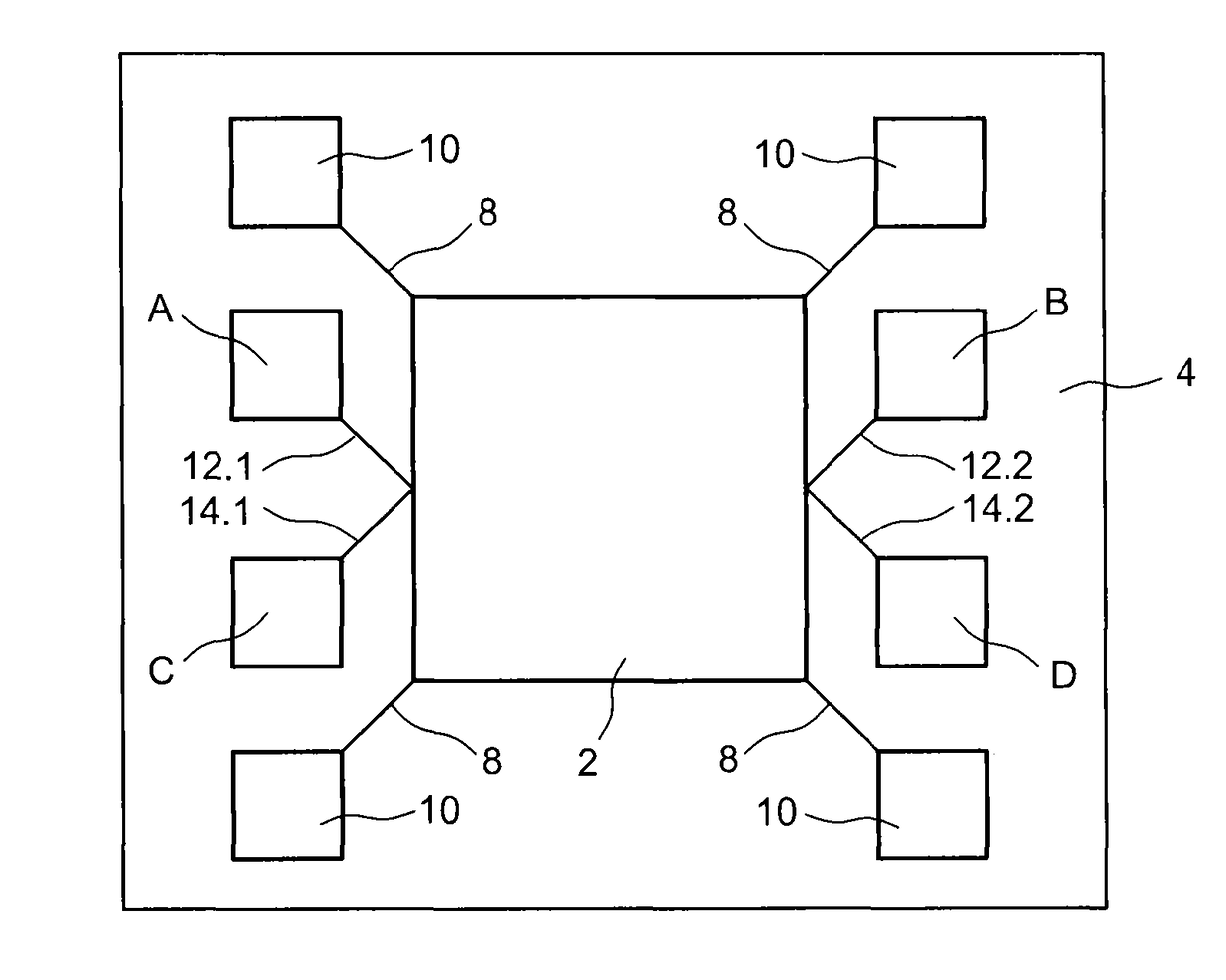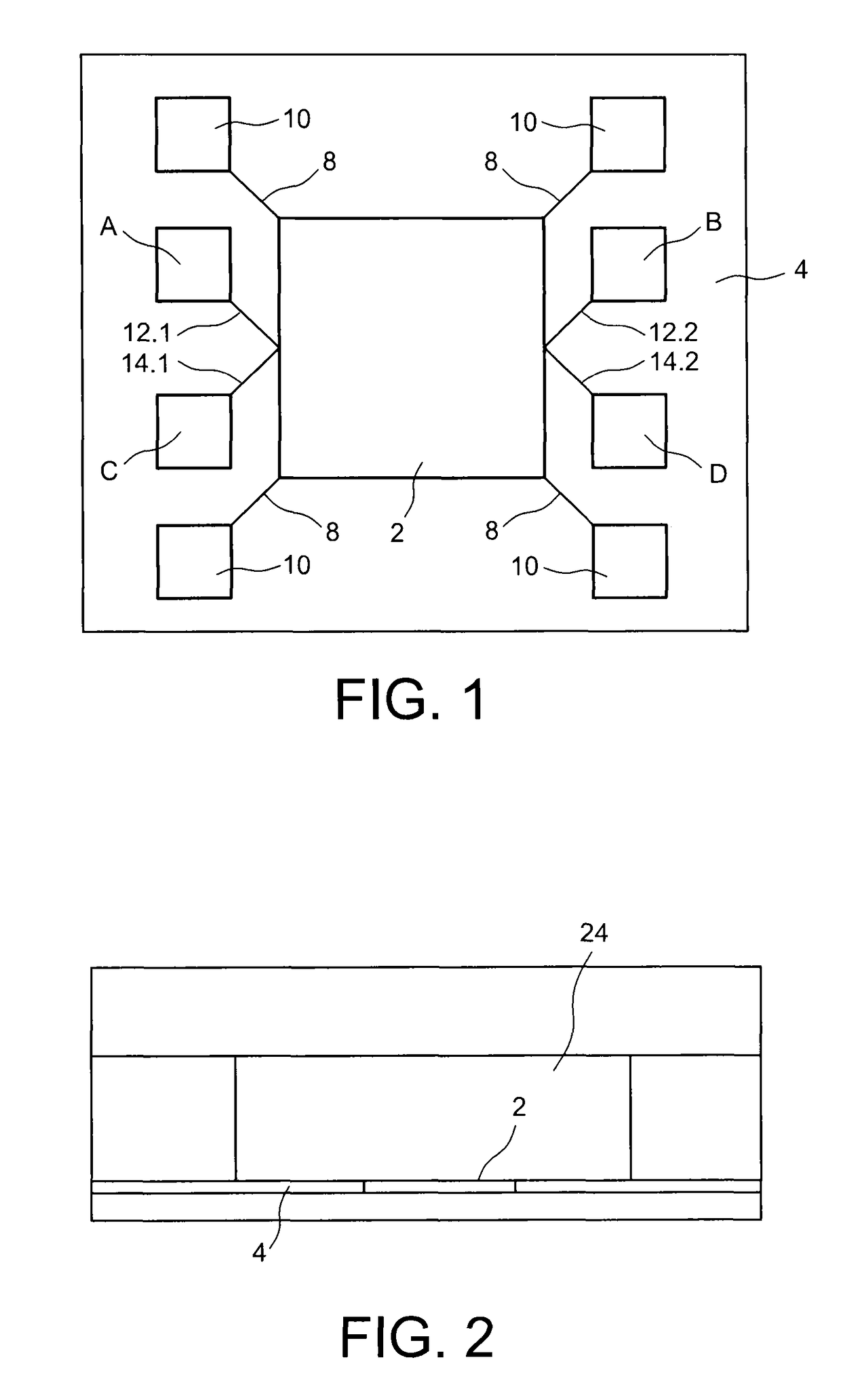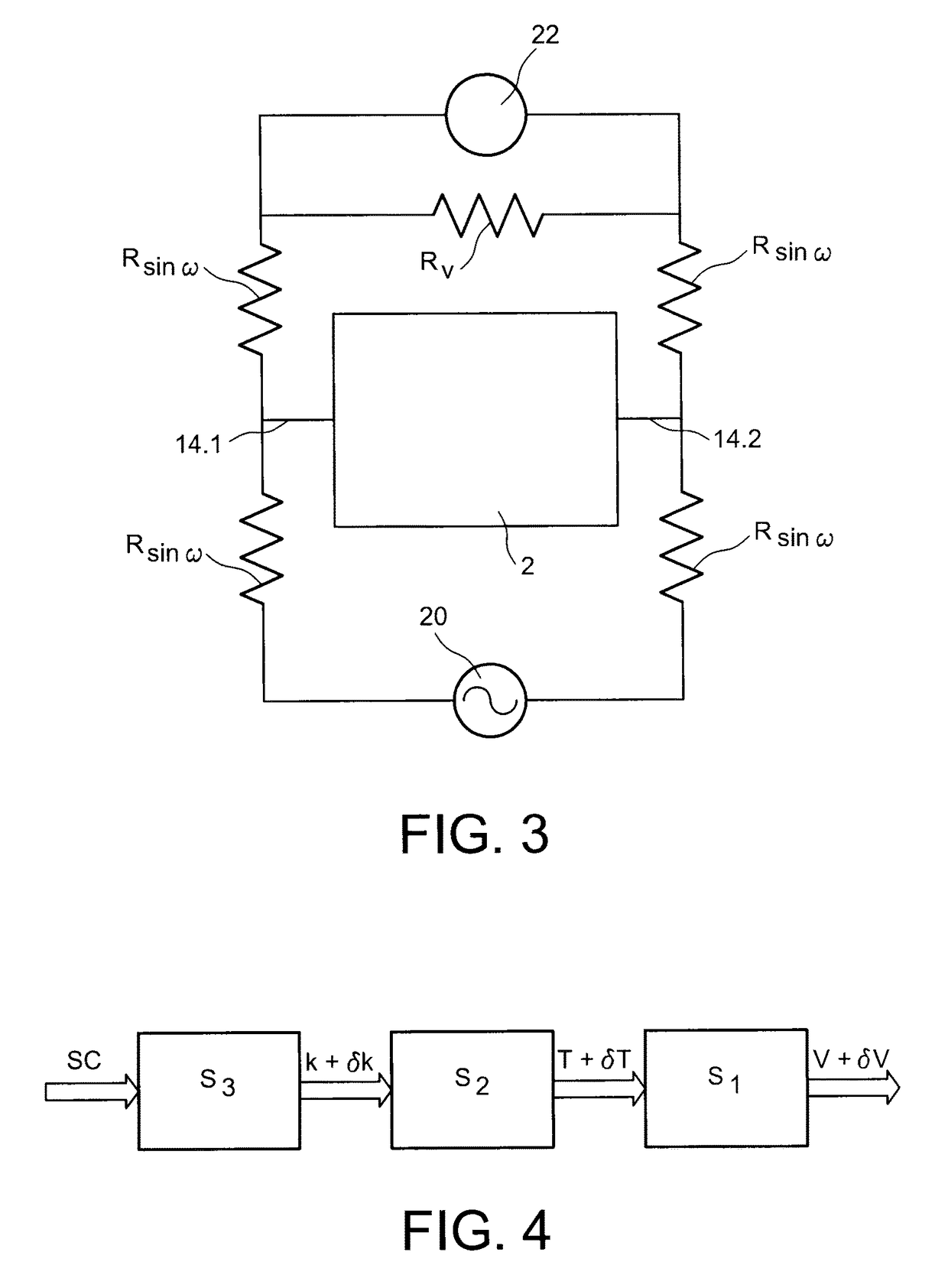Heat flux sensor with increased resolution
a technology of heat flux and sensor, applied in the field of heat flux sensor, can solve the problems of inability to reduce the size of the sensor, the sensor is less sensitive in terms of measurement of concentration for very light and/or volatile molecules, and the quantity of ions produced is always small
- Summary
- Abstract
- Description
- Claims
- Application Information
AI Technical Summary
Benefits of technology
Problems solved by technology
Method used
Image
Examples
Embodiment Construction
[0017]It is consequently one aim of the present invention to provide a heat flux sensor with improved resolution, which is simple to produce and which occupies a small volume.
[0018]The declared aim is achieved by a heat flux sensor comprising at least one membrane suspended relative to a substrate by nanowires, where means of heating and polarising the membrane formed by nanowires connect the membrane to at least one current source, and means of measuring the electrical voltage at the membrane's terminals.
[0019]The voltage measuring means may be formed by nanowires connecting the membrane and a voltmeter.
[0020]Use of nanowires between the membrane and the substrate provides thermal insulation of the membrane relative to the substrate, which limits the heat leakages via the membrane's suspension means, and makes the device more sensitive to the heat leakages occurring due to the gas.
[0021]The heating nanowires and the polarisation nanowires and nanowires for measuring the voltage var...
PUM
| Property | Measurement | Unit |
|---|---|---|
| thick | aaaaa | aaaaa |
| thick | aaaaa | aaaaa |
| temperature coefficient of resistance | aaaaa | aaaaa |
Abstract
Description
Claims
Application Information
 Login to View More
Login to View More - R&D
- Intellectual Property
- Life Sciences
- Materials
- Tech Scout
- Unparalleled Data Quality
- Higher Quality Content
- 60% Fewer Hallucinations
Browse by: Latest US Patents, China's latest patents, Technical Efficacy Thesaurus, Application Domain, Technology Topic, Popular Technical Reports.
© 2025 PatSnap. All rights reserved.Legal|Privacy policy|Modern Slavery Act Transparency Statement|Sitemap|About US| Contact US: help@patsnap.com



